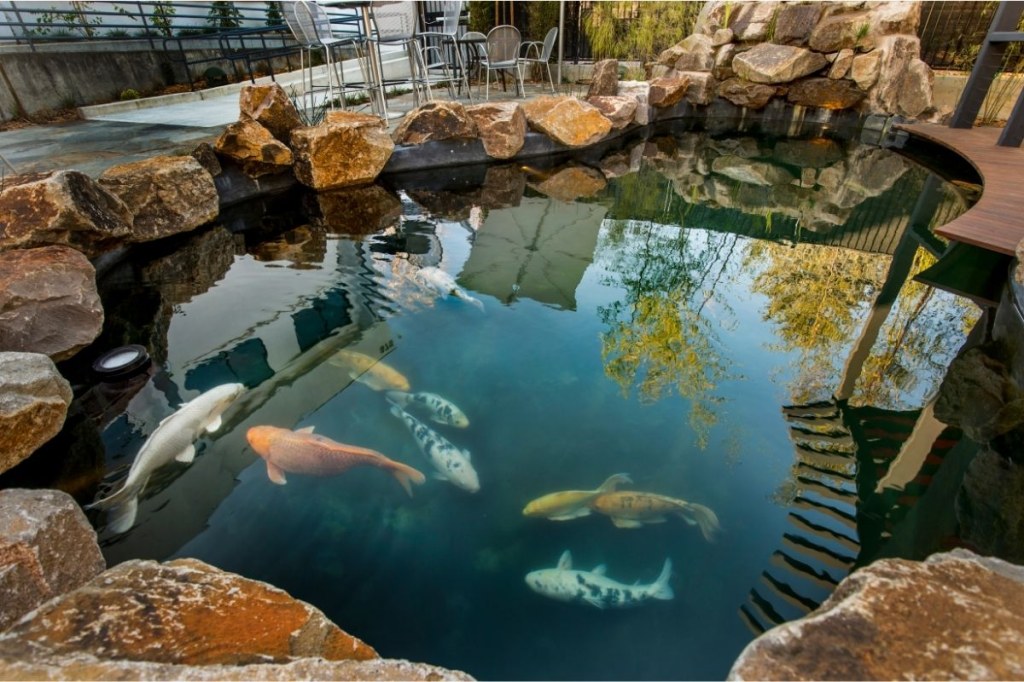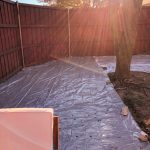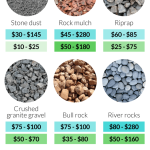The Ultimate Guide: Discover The Cheapest Way To Seal A Pond And Take Action Now!
Cheapest Way to Seal a Pond: A Budget-Friendly Solution for Pond Owners
Introduction
Dear Shopper,
Welcome to our comprehensive guide on the cheapest way to seal a pond. As a budget-conscious pond owner, we understand your desire to find cost-effective solutions that do not compromise on quality.
2 Picture Gallery: The Ultimate Guide: Discover The Cheapest Way To Seal A Pond And Take Action Now!


In this article, we will explore various methods and materials that can help you seal your pond without breaking the bank. From natural options to affordable synthetic alternatives, we have gathered all the information you need to make an informed decision.
So, let’s dive into the world of pond sealing and discover the most economical solutions for your aquatic paradise.
What is Pond Sealing?

Image Source: pondacademy.com
Sealing a pond involves creating a barrier that prevents water from seeping into the surrounding soil. This barrier is crucial for maintaining water levels, preventing leaks, and ensuring the overall health of your pond ecosystem.
🔍 Why is pond sealing important?
Pond sealing is essential to keep your water feature functional and sustainable. Without proper sealing, water loss can occur, leading to a range of issues such as decreased water levels, increased maintenance costs, and potential damage to nearby structures.
Who Should Consider Pond Sealing?
Anyone who owns or manages a pond should consider sealing it, especially if they notice water loss or suspect leaks. Pond owners dealing with recurring water level issues, excessive evaporation, or unstable soil conditions should take immediate action to preserve their investment.

Image Source: waterheaterhub.com
🔍 When should you consider pond sealing?
It is advisable to consider pond sealing as soon as you notice any irregularities in your pond’s water levels or suspect the presence of leaks. Addressing the issue promptly can help prevent further damage and save you from costly repairs in the long run.
Where Can You Find Affordable Pond Sealing Materials?
When it comes to finding affordable pond sealing materials, there are several options available both online and in physical stores. Local home improvement retailers, specialized pond supply stores, and online marketplaces offer a wide range of products to suit various budgets and needs.
🔍 Where can you find the best deals?
To find the best deals on pond sealing materials, it is worth comparing prices across different suppliers and platforms. Look out for seasonal sales, discounts, and promotions that can significantly reduce the cost of your pond sealing project.
Why Choose the Cheapest Way to Seal a Pond?
Choosing the cheapest way to seal a pond not only helps you save money but also ensures that your pond remains in good condition. By opting for cost-effective solutions, you can allocate your budget to other essential aspects of pond maintenance and enhancement.
🔍 Why is cost-effectiveness crucial for pond owners?
Cost-effectiveness is crucial for pond owners as it allows them to invest in other aspects of their pond’s well-being, such as adding fish, aquatic plants, or innovative features. By minimizing the cost of pond sealing, you can create a harmonious and visually appealing aquatic environment without straining your finances.
How to Seal a Pond on a Budget: Step-by-Step Guide
Now that we understand the importance of pond sealing and the advantages of choosing affordable solutions, let’s dive into the step-by-step process of sealing a pond on a budget.
1. Assess the Pond’s Condition:
Before sealing your pond, assess its condition and identify any weak spots that may require extra attention. Look for signs of leaks, water loss, or soil erosion. This assessment will help you determine the most suitable sealing method for your specific needs.
2. Choose the Right Pond Sealing Material:
Consider your budget, pond size, and personal preferences when selecting the sealing material. Options such as bentonite clay, natural polymers, or synthetic liners offer affordable alternatives to traditional methods.
3. Prepare the Pond:
Clean the pond thoroughly by removing debris, plants, and any existing liners or coatings. Ensure the pond’s surface is smooth and free from sharp objects that may puncture the sealant.
4. Apply the Sealing Material:
Follow the manufacturer’s instructions to apply the chosen sealing material. Whether you are working with clay, polymers, or liners, make sure to evenly distribute the material across the pond’s surface, ensuring complete coverage.
5. Allow the Sealant to Cure:
Depending on the sealing material used, it may take some time for the sealant to cure and create a watertight barrier. Follow the recommended curing period provided by the manufacturer to ensure optimal results.
6. Monitor and Maintain:
Regularly monitor your pond’s water levels and inspect the sealed areas for any signs of leakage. Proper maintenance, including regular cleaning and addressing any issues promptly, will help prolong the life of your pond seal.
Advantages and Disadvantages of Cheapest Pond Sealing Methods
While the cheapest pond sealing methods offer cost-effective solutions for budget-conscious pond owners, it’s important to consider both the advantages and disadvantages of each approach. Let’s explore the pros and cons of these methods:
Advantages:
1. Cost-effective: Cheaper materials are readily available and can significantly reduce your sealing expenses.
2. Easy installation: The cheapest methods often require minimal effort and can be installed without professional assistance.
3. Versatility: Affordable sealing methods can be adapted to various pond shapes and sizes.
4. Natural alternatives: Some inexpensive sealing materials are environmentally friendly and do not harm aquatic life.
5. DIY-friendly: Budget-friendly options are often suitable for do-it-yourself projects, allowing you to save on labor costs.
Disadvantages:
1. Limited lifespan: Cheaper materials may not offer the same durability and longevity as more expensive options.
2. Increased maintenance: Some budget-friendly methods may require more frequent maintenance to ensure their effectiveness.
3. Aesthetic considerations: Cheaper materials may not provide the same visual appeal as higher-end options.
4. Limited availability: Some affordable sealing materials may be harder to find, requiring additional research and effort.
5. Potential risks: Improper installation or use of low-quality materials can lead to sealing failure and additional expenses.
Frequently Asked Questions (FAQ)
1. Is pond sealing necessary for all types of ponds?
While not all ponds require sealing, it is recommended to assess your pond’s condition and consult with a professional to determine if sealing is necessary.
2. Can I seal my pond without professional help?
Yes, many pond sealing methods can be implemented as do-it-yourself projects. However, it is essential to research and follow the proper techniques to ensure optimal results.
3. How long does pond sealing last?
The lifespan of the sealing largely depends on the method and materials used, as well as proper maintenance. While some options may last several years, others may require more frequent reapplication.
4. Can I use natural alternatives to seal my pond?
Yes, there are natural alternatives such as bentonite clay or polymers derived from plant-based sources that can effectively seal ponds.
5. Are there any environmentally friendly sealing options available?
Yes, several environmentally friendly sealing materials are available on the market. These options are designed to minimize harm to aquatic life and surrounding ecosystems.
Conclusion
In conclusion, sealing your pond doesn’t have to be an expensive endeavor. By exploring the cheapest ways to seal your pond, you can balance your budget while ensuring the longevity and functionality of your aquatic paradise.
Remember to assess your pond’s condition, choose the right sealing material, and follow a step-by-step process for optimal results. Regular monitoring and maintenance will help you address any issues promptly and prolong the life of your pond seal.
Now that you have the knowledge and tools to seal your pond in a cost-effective manner, take action and transform your pond into a sustainable and visually stunning feature that will bring you joy for years to come.
Happy pond sealing!
Please note: The information provided in this article is for educational purposes only. Always consult with professionals or specialists for personalized advice based on your specific pond requirements and conditions.
This post topic: Shopping



